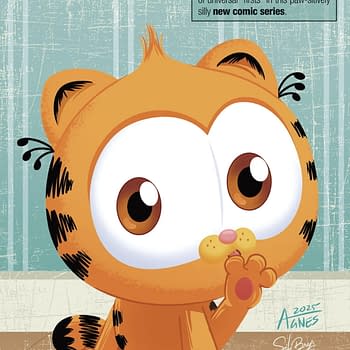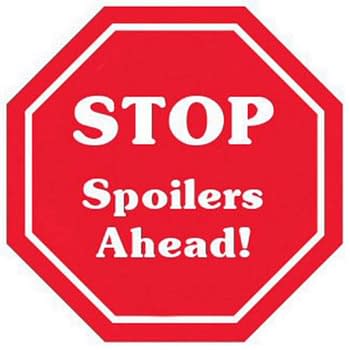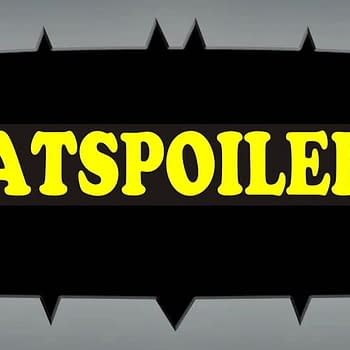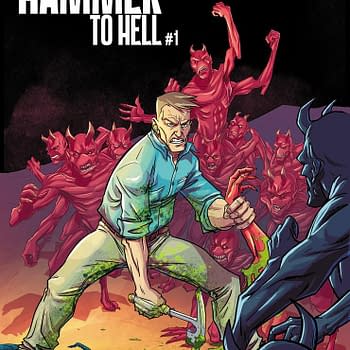Posted in: Comics, Look! It Moves! by Adi Tantimedh | Tagged: Comics, entertainment, how to make comics
A Rundown Of Recent Books On How To Make Comics – Look! It Moves! by Adi Tantimedh
Adi Tantimedh writes,
Nothing fuels aspiring comic book creators more than the advent of a convention, all the enthusiasm, creative energy seen on the show floor and pent-up desires of fans who want to become pros.
Fortunately for aspiring comics creators, the market and industry has grown so much that there's now a good range of books that actually teach the techniques for writing, drawing and telling stories in comics. When I was a kid, all we had was the cherished How to Draw Comics The Marvel Way by Stan Lee and John Romita (now reprinted), which was a perfectly decent primer for basic drawing and comics. Recently, Random House has sent me review copies of their new range of books on creating comics from their subsidiary Watson-Guptill Publications, completely out of the blue, so while we're all exhausted and recovering from New York Comic Con, this week seems a good time to tell you about these books.
There's that old adage "Those who can't do, teach", which doesn't apply here. The authors of these four books are all seasoned professionals who are still working, and like many artists, are sharing their passion in the hopes of teaching anyone who wants to take up the pen and pursue the same dream. My problem with many aspiring artists and wannabes is their lack of knowledge in the basics of anatomy, perspective, research, sequential storytelling, composition and page layout, which are all essential if you want to be a professional. Even the artists who draw in "alternate" styles know the basic rules of anatomy, perspective and realism before they chose to break or ignore them as a conscious aesthetic choice.
In case you're wondering how I know what I'm talking about here, I was a student at the London Cartoon Workshop when I was a kid, and was taught by David Lloyd, Dave Gibbons, John Burns, Paul Neary and even Alan Moore at the time when they were still completing V For Vendetta and Watchmen. These artists were –and still are – strict teachers who hammered the basics of anatomy and perspective into us. I just happen to make my living as a writer rather than an illustrator these days.
Foundations in Comic Book Art: Fundamental Tools and Techniques for Sequential Artists by John Paul Lowe, a professional artist and instructor at The Savanah College of Art and Design, is exactly what it says it is, a hardcore lesson in all the techniques you need. It's like sitting through a course at art college where you're taught the importance of basic anatomy, perspective, observation, the need for research, problem-solving, and also the use of different tools such as pens and paper, inking techniques and the fundamentals of using digital software.
Draw-A-Saurus by James Silvani may not be the most essential title on this list, but Silvani is another established professional who has worked for Disney, Dreamworks, Lucasfilm, Warner Brothers and Marvel. The book is all about the fundamentals on how to draw dinosaurs, their anatomy, their bone structures, how they move and so on. That's also a foundation in how to draw four-legged animals, so don't poo-poo this book. It's actually fun to have around and a quick reference that saves you having to pour through a google search if you ever have to draw dinosaurs.
Make Comics Like the Pros by Greg Pak and Fred Van Lente is a general book on not just art and writing, but also the business end of being a creator. It tells you about how to think like a storyteller, not just an artist or writer, how to deal with pitches and proposals, how to communicate your vision to prospective editors and publishers from two prolific high profile creators who have written for nearly all the major companies.
Words for Pictures: the Art and Business of Writing Comics and Graphic Novels by Brian Michael Bendis, the most high profile of all the creators writing a book offering their experience and expertise, is also the most idiosyncratic. Bendis offers a highly personal take on his approaches and interviews many artists and creators about their thinking, how to approach collaborating with artists and other creators, on top of dealing with editors and publishers, the basics in conducting yourself as a professional. Above all, he stresses the need for writers to live life in order to have actual experience to draw on in their writing instead of just recycling clichés. It's an invaluable guide to life as a professional writer.
What all of these books – and there are many others from different publishers, including how to draw manga – have in common is also the emphasis on the fact that creating comics books is FUN. It should be fun. Comics are, after all, about joyfully telling stories, the joy of creating stories and the joy of reading them, and the joy of being inspired to make your own. They're not dry instructional manuals. The pages are peppered with artwork and pages from published comics to illustrate their points. They also don't need the thousands of dollars you have to pay to go to an art school to learn to draw comics. You don't need a degree to draw comics. You just need to be good at it and act professionally. These books are a good start for learning how.
Do it all yourself at lookitmoves@gmail.com. Follow the official LOOK! IT MOVES! twitter feed at http://twitter.com/lookitmoves for thoughts and snark on media and pop culture, stuff for future columns and stuff I may never spend a whole column writing about.
Look! It Moves! © Adisakdi Tantimedh
















